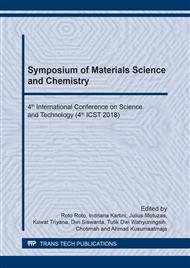p.153
p.159
p.169
p.175
p.181
p.186
p.192
p.198
p.206
Effects of Fiber Contents on Wear Resistance of Salacca zalacca Frond Fiber Reinforced Phenolic
Abstract:
In the last decades, natural fiber composites have received much attention as important structural materials for lightweight components in automotive, and space industries because of low density, high specific strength, and environment-friendly materials. Some natural fibers, however, still not applied in more useful structure, one of which is the frond fiber of snake fruit (salacca zalacca). This fiber is usually just burned or fired as the agricultural waste. The present paper presents the result of the development of frond salacca fiber as the wear component of natural fiber reinforced phenolic. In this composite, the fiber and the phenolic are in the form of powder. The variation of fiber volume fraction was used as the main factor in the tribology characteristics of the composite. The specific wear and also the hardness is then compared to that of the existed commercially available motorbike brake pad as a comparison.
Info:
Periodical:
Pages:
181-185
Citation:
Online since:
March 2019
Authors:
Keywords:
Price:
Сopyright:
© 2019 Trans Tech Publications Ltd. All Rights Reserved
Share:
Citation:


